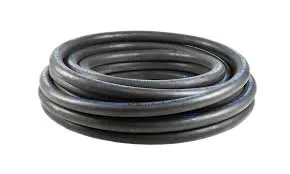How to Repair a Leak in Your Power Steering Hose Effectively
How to Fix a Power Steering Hose Leak
Power steering is an essential component of modern vehicles, providing drivers with the ease of maneuvering their cars. However, like any mechanical system, it can develop problems over time. One common issue that drivers face is a leaking power steering hose. If left unattended, this can lead to more serious problems and costly repairs. Here, we will discuss the signs of a power steering hose leak, the reasons behind it, and how to fix it.
Signs of Power Steering Hose Leak
The first sign of a power steering hose leak is often noticeable fluid on the ground where the vehicle is parked. Power steering fluid is typically reddish or pink in color and has a slightly oily feel. If you notice this fluid beneath your vehicle, it's essential to investigate further.
Another indication of a problem is difficulty while steering. If you find the steering wheel harder to turn or experience a whining noise when turning, these symptoms could indicate low power steering fluid levels due to a leak. Ignoring these signs can result in added stress on the steering system, potentially leading to failure.
Causes of Power Steering Hose Leak
Several factors can contribute to a power steering hose leak. Over time, age and wear can cause the hoses to crack or develop holes. Exposure to extreme temperatures, as well as exposure to certain chemicals, can weaken the material. Additionally, improper installation or tight bends in the hose can create stress points, making leaks more likely.
Steps to Fix a Power Steering Hose Leak
If you suspect a leak in your power steering hose, here are the steps you should follow to fix it
1. Safety First Before beginning any repair work, ensure the vehicle is parked on a flat surface, and the engine is turned off. Engage the parking brake.
fix power steering hose leak

2. Locate the Leak Start by inspecting the power steering hoses and connections. Look for wet spots, cracks, or damaged sections. It might be helpful to use a flashlight to examine hard-to-see areas.
3. Assess the Damage If the hose is simply worn or damaged, you will likely need to replace it. In some cases, a minor leak can be sealed with a power steering stop leak product, but this is often only a temporary fix.
4. Gather Tools and Parts You will need a new power steering hose, basic hand tools (such as wrenches and pliers), and possibly a fluid catch pan.
5. Remove the Old Hose Carefully disconnect the old hose from the steering pump and the rack. Be prepared for some fluid to leak out, so have the catch pan in place.
6. Install the New Hose Attach the new hose, ensuring that it fits snugly and is properly connected to the pump and the steering rack. Avoid over-tightening, which can also cause leaks.
7. Refill the Power Steering Fluid Once the new hose is installed, refill the power steering fluid reservoir with the recommended type of fluid for your vehicle. Be sure to check your owner's manual for the correct specifications.
8. Test for Leaks Start the engine and turn the steering wheel back and forth multiple times. This action will circulate the fluid and help identify any leaks. If everything seems normal, you have successfully fixed the issue.
9. Clean Up Dispose of any spilled fluid properly and clean your tools.
Conclusion
Fixing a power steering hose leak is an essential DIY task that can save you money and prevent further damage to your vehicle. Regular inspections and maintenance can help catch these problems early and keep your vehicle running smoothly. If you're uncomfortable with performing the repair yourself, don't hesitate to consult a professional mechanic. Taking care of your power steering system will ensure that your driving experience remains safe and enjoyable.
-
Ultimate Spiral Protection for Hoses & CablesNewsJun.26,2025
-
The Ultimate Quick-Connect Solutions for Every NeedNewsJun.26,2025
-
SAE J1401 Brake Hose: Reliable Choice for Safe BrakingNewsJun.26,2025
-
Reliable J2064 A/C Hoses for Real-World Cooling NeedsNewsJun.26,2025
-
Heavy-Duty Sewer Jetting Hoses Built to LastNewsJun.26,2025
-
Fix Power Steering Tube Leaks Fast – Durable & Affordable SolutionNewsJun.26,2025

